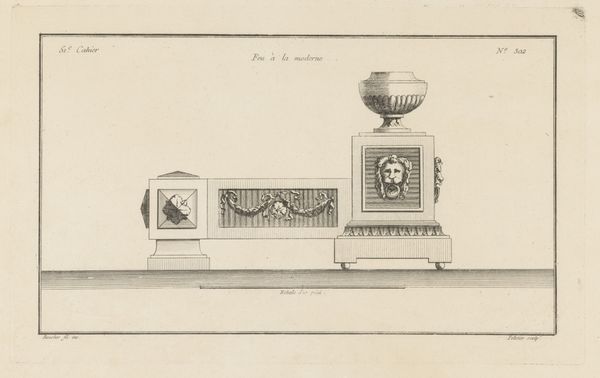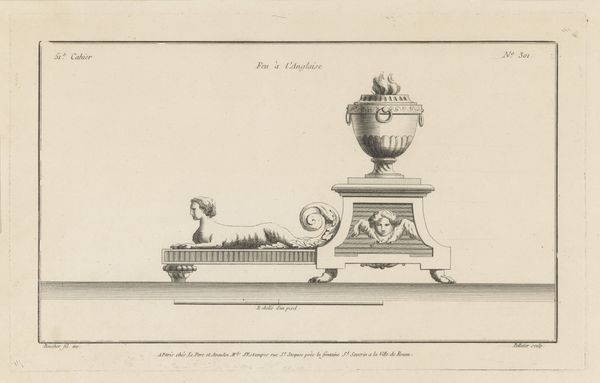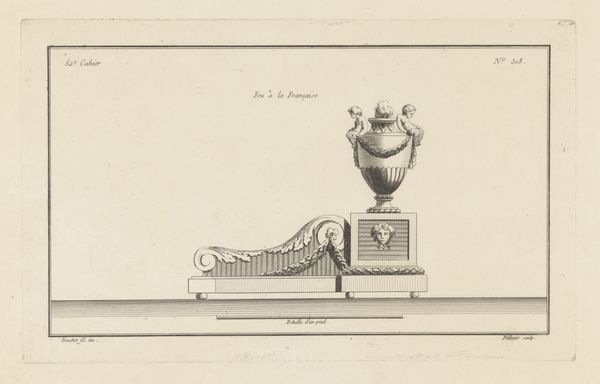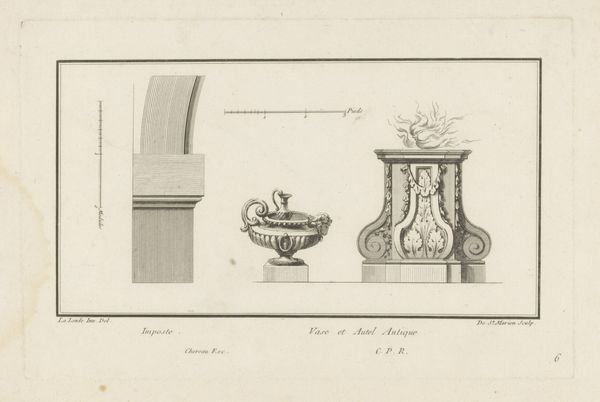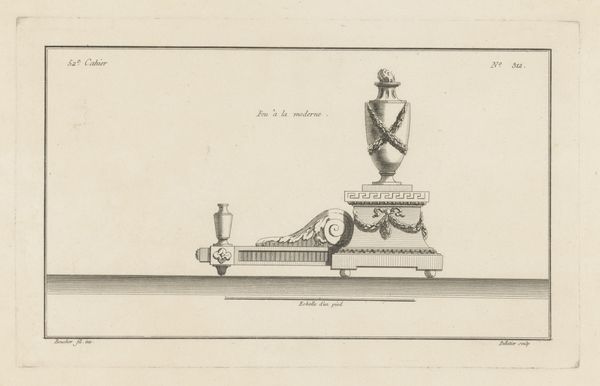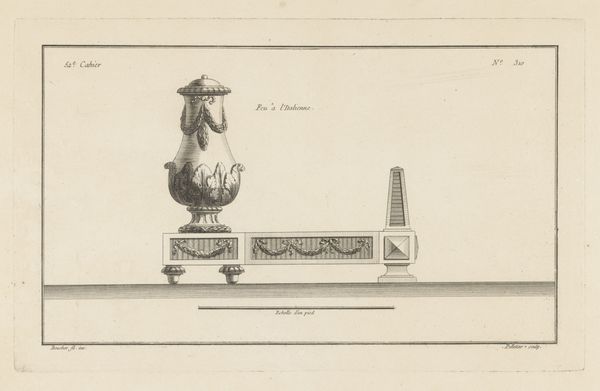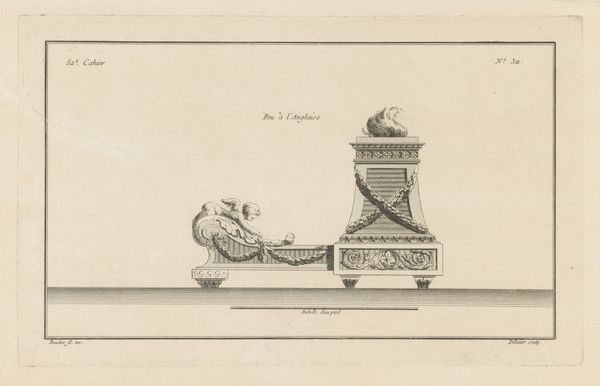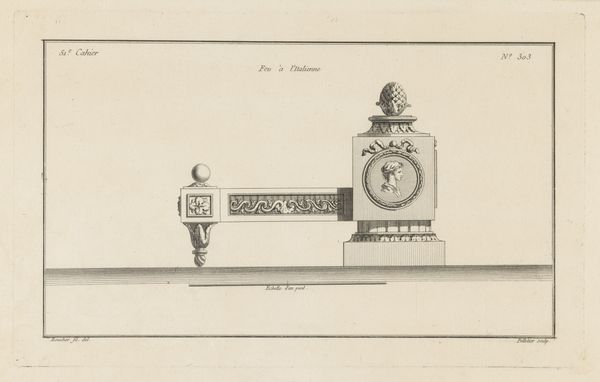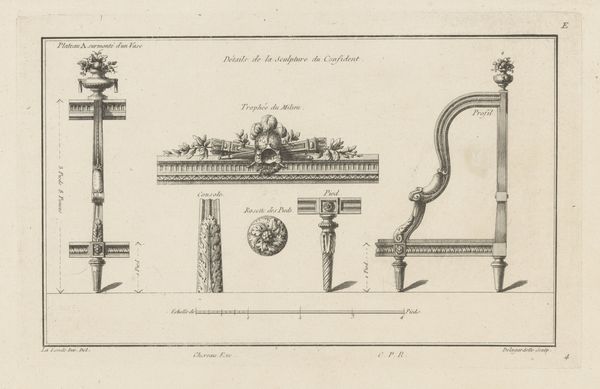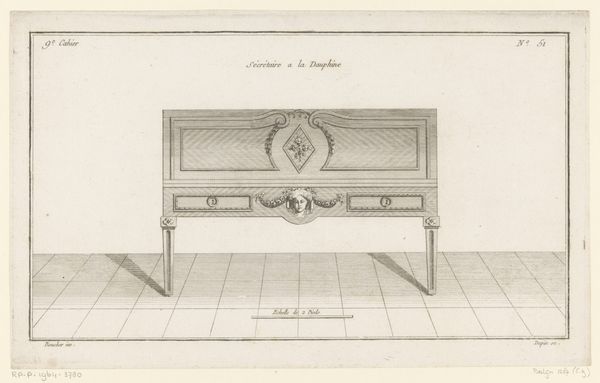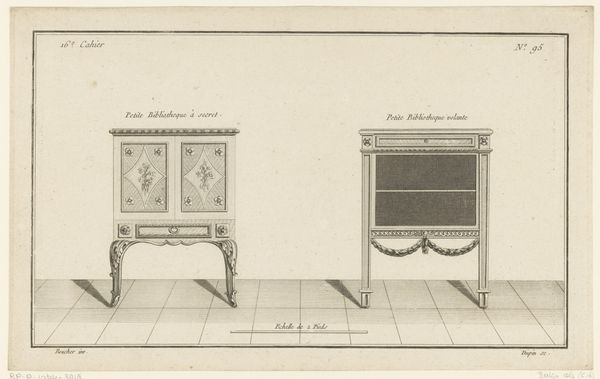
drawing, etching, pencil
#
drawing
#
neoclacissism
#
etching
#
pencil sketch
#
classical-realism
#
geometric
#
pencil
#
history-painting
Dimensions: height 206 mm, width 330 mm
Copyright: Rijks Museum: Open Domain
Editor: This is Jean Pelletier's "Vuurbok met rond element," created sometime between 1772 and 1779. It's an etching and pencil drawing of a fire dog. I'm struck by how architectural it feels, almost like a miniature monument. What are your initial thoughts on this piece? Curator: The geometric formality indeed signals the neoclassical movement. But let's consider the object itself: a fire dog, designed for the hearth. How does Pelletier elevate a utilitarian object, designed to manage and consume material resources into an aesthetic statement? Is it truly a celebration of geometry, or an essay on the culture of consumption during this era? Editor: That’s interesting. So you’re saying it's not just about the classical forms, but also about the fireplace as a site of resource use and potentially display? Curator: Precisely. Neoclassicism was, in part, a reaction against the excesses of the Rococo. Notice how Pelletier emphasizes linear form and carefully rendered details – almost a blueprint-like quality. It reflects the Enlightenment emphasis on reason and order. Think about what materials would have been available for making a 'vuurbok' for this time, the relative costs involved, who it was being made for, what this said about the patrons… all considerations when interrogating high art and functional crafts together. Editor: I hadn't thought of it in terms of resource management or as an example of early consumer culture, but that context makes the piece much richer. I’ll consider the means of production next time I look at similar works! Curator: That’s the key: connecting aesthetic choices to the social and economic realities of their making. Remember the artist as craftsman and consider the patron.
Comments
No comments
Be the first to comment and join the conversation on the ultimate creative platform.

